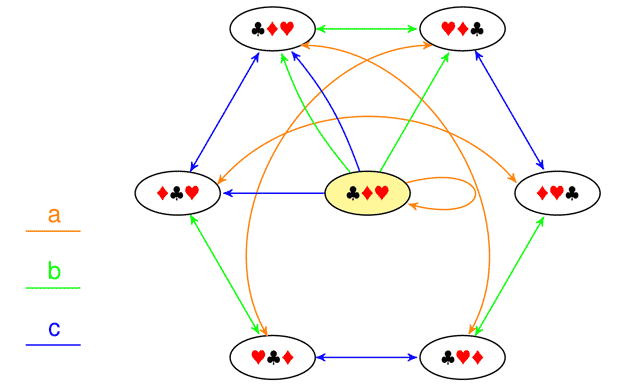Players a, b, and c were dealt cards from a three card deck. The cards are labeled clubs, hearts, and diamonds. The deal is private, and the actual result was that a received clubs, b diamonds, and c hearts. After this, a peeked at b's card, thereby learning c's card, too.
Epistemic logicians represent such scenarios using pictures like the one shown below. The ovals represent states, and there is an actual state shown in yellow. The arrows are colored according to the agents. For example, a green arrow from one state to another represents the assertion that if first state were the actual state, then b would think that the actual state could be the second state. I have not shown many self-loops on all of the states in the outer hexagon.
We use these kinds of representations to interpret formal sentences in a logical language. For example, there is a formal sentence that says that b believes that a does not know c's card. This sentence turns out to be true in the representation, even though b's belief is false.
Important work in the field was done in 1998 by Alexandru Baltag when he was an Indiana University Mathematics graduate student. This makes it possible to arrive at complex representations in a step-by-step manner. I teach this material as part of M385, a course on modal logic.- Lawrence S. Moss

 The College of Arts
The College of Arts